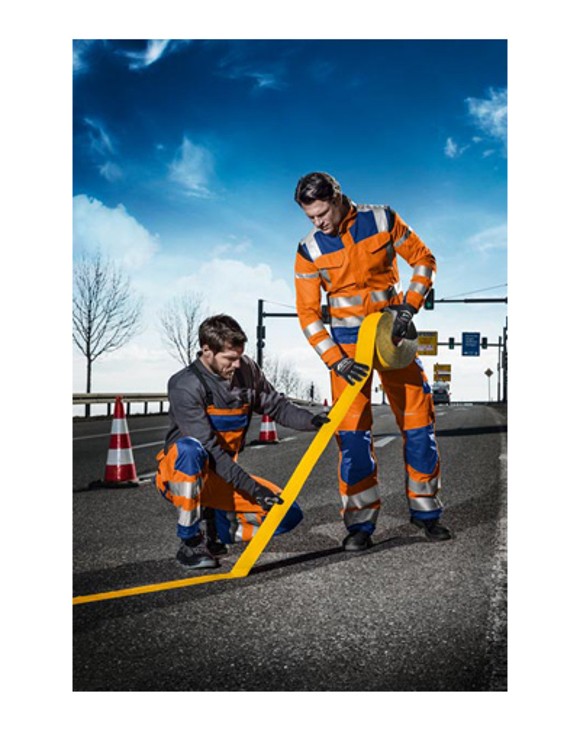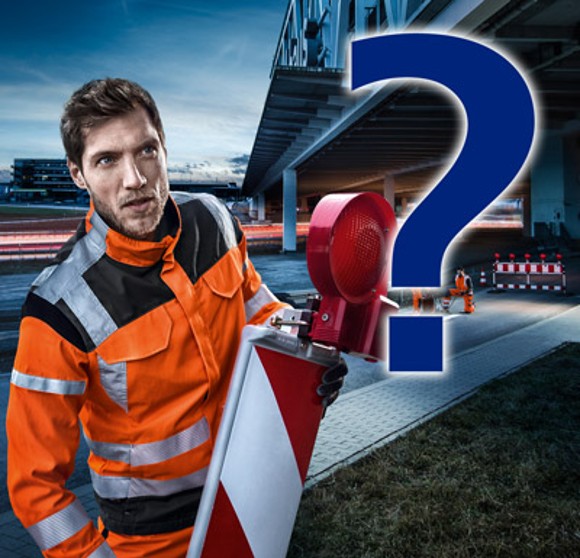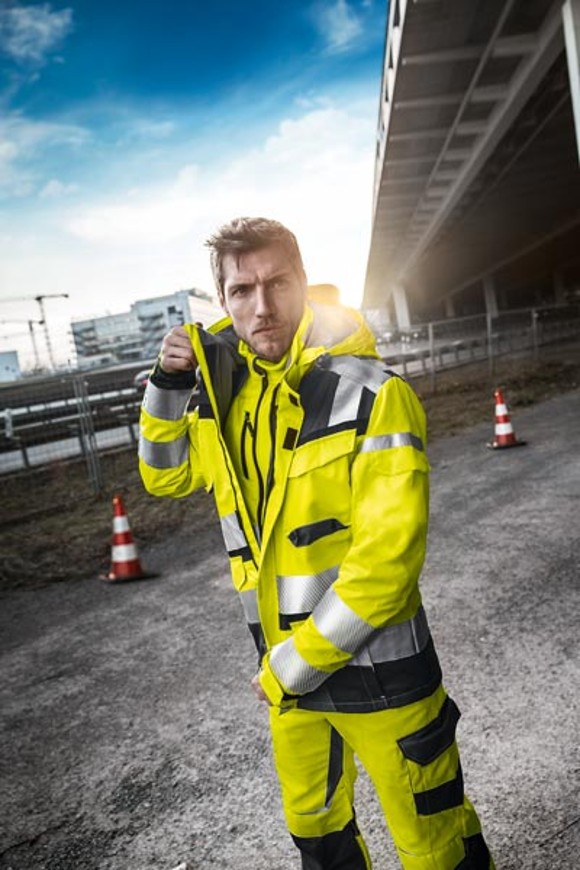
Protective Clothing – Reflective, fluorescent, safe
Protect yourself with our high-visibility clothing, multi-norm clothing, disposable protective clothing, and heat protection clothing. Our high-visibility clothing is available in compliance with standards from Class 1 to Class 3, featuring reflective and fluorescent materials.
To the productsWhat standards exist in the field of protective clothing?

- EN ISO 20471: High-visibility warning clothing
- EN 343: Protective clothing - Protection against rain
- EN 14058: Protective clothing - Garments for protection against cool environments
- EN ISO 11611: Protective clothing for welding and related processes
- EN ISO 11612: Protective clothing - Clothing for protection against heat and flames
- EN 1149-5: Protective clothing - Electrostatic properties
- IEC 61482-2: Protective clothing against the thermal hazards of an electric arc
- EN 14126: Protective clothing against infective agents
- EN 13034: Protective clothing against liquid chemicals (Type 6)
- EN 14605: Protective clothing against liquid chemicals (Type 3 and Type 4)
- EN 1073-2: Protective clothing against radioactive contamination

Type 3 / EN 14605
Liquid-tight
Protective clothing against liquid chemicals.
Exposure to pressurized liquid splashes.

Type 4 / EN 14605
Spray-tight
Protective clothing against liquid chemicals.
Exposure to non-pressurized liquid splashes.

Type 5 / EN ISO 13982-1
Solid Particles
Protection against airborne solid particles.

Type 6 / EN 13034
Limited protection against liquid chemicals.
Potential exposure to small amounts of fine liquid spray/mist or occasional small liquid splashes, where the wearer can take appropriate action promptly in case of contamination.
Which high-visibility class do I need?
The required high-visibility class depends on the workplace and location. Generally, there are 3 classes:
Class 1: High-visibility clothing of Class 1 is required when working near traffic traveling at speeds of 30 km/h or less or when visitors are present on the company premises. In practice, Class 1 is almost never used.
Class 2: High-visibility clothing of Class 2 is required when working near traffic traveling at speeds between 30 and 60 km/h or on construction sites. This is the most common class in practice.
Class 3: High-visibility clothing of Class 3 is required when working near traffic traveling at speeds of 60 km/h or more. This may occur on highways, during rescue operations, or in the transport industry.
For example, if Class 2 is required, the selection of the appropriate high-visibility clothing is relatively simple. You simply choose a Class 2 high-visibility pair of trousers. However, if Class 3 is required, the situation becomes more complicated. Class 3 is often met by high-visibility coats, which, however, are not desirable in summer due to the high temperatures, or by a combination of high-visibility trousers and high-visibility tops.
But be careful: Class 1 and Class 2 do not necessarily add up to Class 3. It always depends on the proportion of fluorescent background material and retro-reflective material.
The following table shows the required amount of fluorescent background material and retro-reflective material needed to achieve each class:
| CLASS 1 | CLASS 2 | CLASS 3 | |
| Fluorescent background material | minimum 0.14 m² | minimum 0.5 m² | minimum 0.8 m² |
| Retro-reflective material | minimum 0.10 m² | minimum 0.13 m² | minimum 0.2 m² |
| Length with 5 cm wide strips | minimum 2 meters | minimum 2.6 meters | minimum 4 meters |
Did you know that when working on roads at speeds of 60 km/h or higher, clothing with High Visibility Class 3 must be worn?
High visibility clothing follows the EN ISO 20471 standard, which is divided into 3 classes. For speeds above 60 km/h, the highest class, Class 3, applies. To meet Class 3 requirements, a high-visibility coat, long high-visibility jacket, or a combination of high-visibility pants and high-visibility top can be worn.

Can a company logo be applied to my high visibility clothing?

In general, a company logo can be applied to high visibility clothing. However, certain points must be considered to ensure that safety requirements are not compromised. For example, it must be ensured that, even after embellishment (e.g., embroidery or printing), the area of the fluorescent background material is still large enough (see previous table). To ensure that the high visibility clothing still meets the specified class, this type of embellishment should always be done directly by the manufacturer.
Would you like to have your protective clothing customized, for example, by adding your company logo to it?
We would be happy to provide you with a personalized offer. Please contact your representative at HAHN+KOLB or send us your request via email.
Request now
